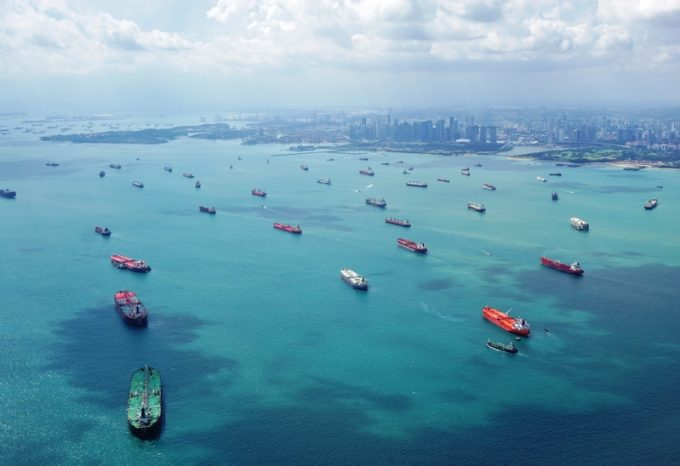
Some 90 containerships, equating to over 600,000 teu of capacity, have found employment in the past month as carriers continue to reinstate blanked sailings and add extra loaders on routes.
According to the latest survey by Alphaliner the idle containership fleet stood at 223 vessels, for 969,000 teu, at 17 August, representing 4.1% of the global cellular fleet.
Moreover, not all of these ships are actually open for employment, with 11 vessels of 12,500 teu and over currently out of service due to scrubber installations.
The consultant’s report on 20 July recorded 313 ships in lay-up, with a capacity of 1.56m teu, 6.6% of the world’s fleet.
At the end of May, during the peak of the pandemic, Alphaliner recorded an all-time high of 551 laid-up ships, for 2.72m teu, representing 11.6% of the global fleet.
“The inactive containership fleet dipped below the 1m teu mark for the first time in 2020, as carriers resumed several suspended services on the Far East-North America and Far East-Europe routes. Shipping lines also reduced the number of planned skipped sailings and implemented summer peak season extra loops,” said Alphaliner.
Compared with the 20 July report, all sizes have seen new employment, with for example the larger sector of vessels of over 12,500 teu reducing by 17 ships to 16, with the number of idled 7,500-12,500 teu vessels falling by 11 to 27.
“The pool of large inactive ships continues to recede as carriers cater for high demand, especially in the transpacific trade where MSC will soon launch an additional peak season loop, marketed as Santana,” said Alphaliner.
The Geneva-based carrier announced last week it would commence the new loop at the end of August, “in anticipation of continuous strong market demand”.
The Loadstar understands that the loop will be independent of the 2M alliance and thus will not be co-loaded with its 2M partner Maersk.
Meanwhile, the 2M has also reinstated two loops in the transpacific that were temporarily suspended in April.
Unsurprisingly, given the the substantial fall in open tonnage, charter market daily hire rates have rebounded strongly. The Alphaliner charter rate index has recorded a massive 35% jump in the past month, from a reading of 52 points to over 70, and is well on the way to recovering the losses suffered due to the impact of Covid-19 on cargo and ship demand.
“The outlook is today more positive than anticipated, with carriers reporting encouraging numbers in their latest financial results,” said Alphaliner.
Notwithstanding the lack of market visibility due to the risks from a second wave of the virus during the winter season, the consultant said the omens were for “better days ahead” for the charter market.




